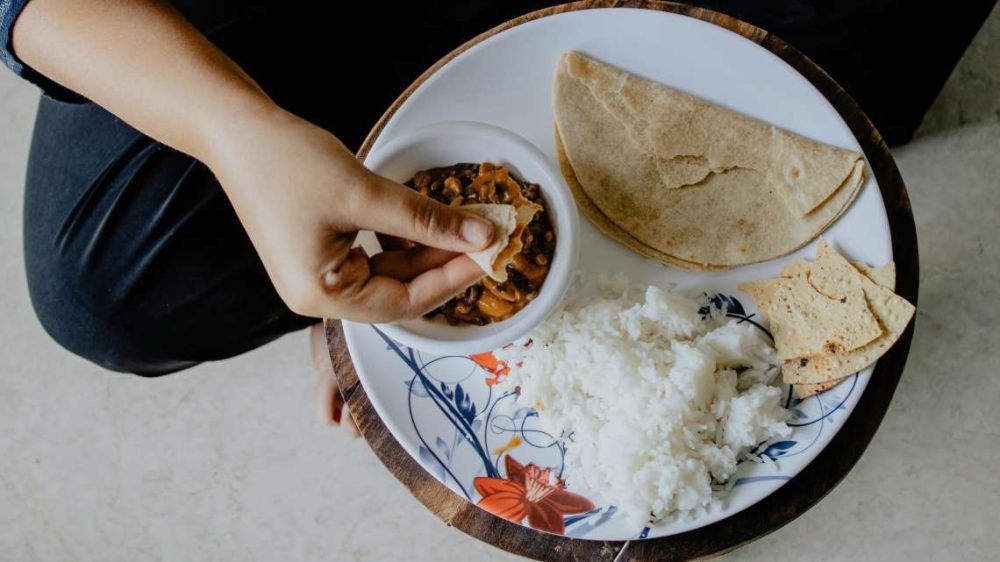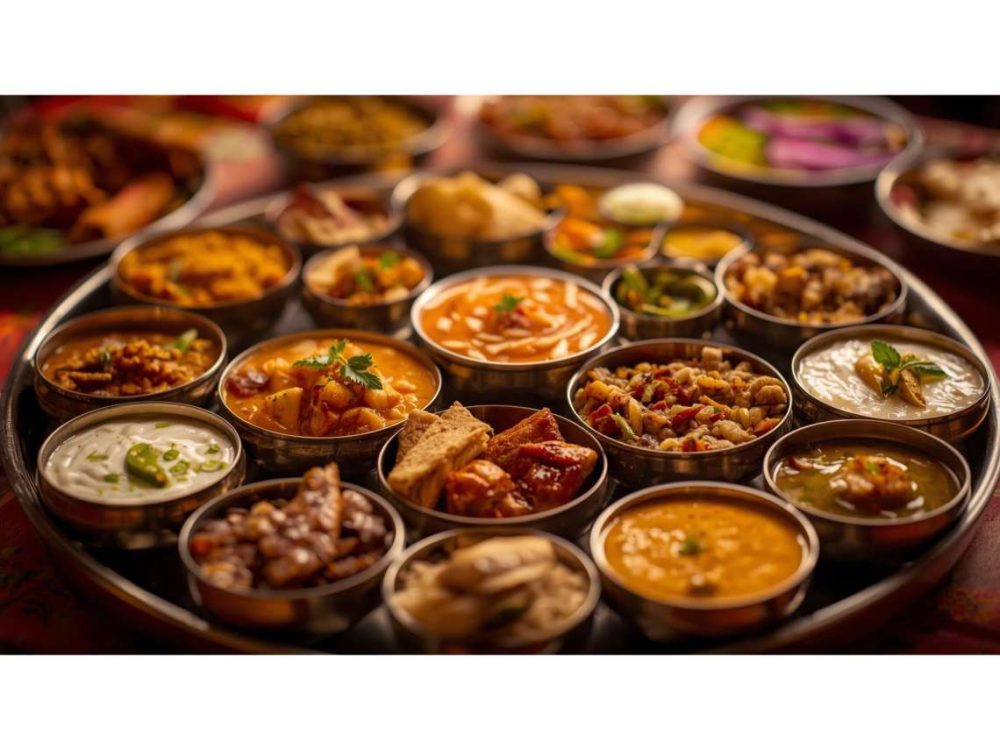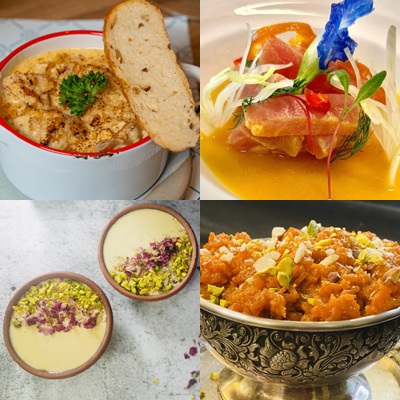“Food is more than just a way to provide fuel to our bodies, especially in the consumer culture in which individuals and communities are increasingly enmeshed in post-industrial societies.” An Interview with Professor Fabio Parasecoli by Aswin Prasanth and Rajesh Panhathodi

Fabio Parasecoli is a Professor in Food Studies in the Department of Nutrition and Food Studies at New York University. His research explores the intersections among food, popular culture, and politics, particularly in food design. He studied East Asian cultures and political science in Rome, Naples and Beijing. After covering Middle and Far Eastern political issues, he wrote for many years as the U.S. correspondent for Gambero Rosso, Italy’s authoritative food and wine magazine.
He has authored books like Bite me! Food in Popular Culture (2008), the six-volume Cultural History of Food (2012, co-edited with Peter Scholliers), Al Dente: A History of Food in Italy (2014, translated into Italian in 2015 and into Korean in 2017), Feasting Our Eyes: Food, Film, and Cultural Citizenship in the US (2016, authored with Laura Lindenfeld), and Knowing Where It Comes From: Labeling Traditional Foods to Compete in a Global Market (2017). His new book Food (2019) has been released by MIT Press in the Essential Knowledge series.

1. What is the significance of Food Studies as an academic discipline? Could you talk about your department at NYU?
Food studies urge us to better understand the world we live in by developing critical thinking and the capacity to participate in civic debates surrounding an aspect of our lives that affects all of us in a very visceral, direct way. Public attention around food system issues is growing, and food-related venues in the media are multiplying. The field draws from a variety of research fields, including agricultural sciences, environmental studies, biology, nutrition, economics, business, law, design, marketing and politics. It also applies methods and approaches borrowed from history, post-colonial studies, semiotics, gender and media studies, among others. In particular, food studies’ fruitful dialogue with anthropology and sociology can provide fresh perspectives and methods to conduct ethnographic research. The Nutrition and Food Studies department where I am a professor was established at New York University in the late 1990s. It now has undergraduate, graduate, and doctoral programs, with students from all over the world. The department also maintains a program of talks called “Feast and Famine,” together with seminars and research initiatives such as CityFood, dedicated to the study of street food.

2. Food Studies is a nascent discipline of interdisciplinary nature. Could you explain the cultural politics of food?
Food constantly acquires political meaning, if by that if refer to politics in its etymological sense: the affairs of the polis, the city in Classical Greece and, later, the body politic in general, whatever its scale and its extension may be. From this point of view, politics is the attempt at managing such a community, assessing the past, negotiating the present, and imagining the future. Political practices are often torn between compromise and maximalism, reality and ideals, necessity and values. It is inevitable that food gets entangled in these dynamics.
Food is more than just a way to provide fuel to our bodies, especially in the consumer culture in which individuals and communities are increasingly enmeshed in post-industrial societies. Although obviously crucial for survival, eating cannot be considered only as an expression of biological necessities and a natural, trivial aspect of our daily routine. Food is at the same time part of economic dynamics, social structures, and power negotiations that determine where our products come from, how they get to us, why we have access to those and not others, and where they end up if we don’t buy them or throw them away.
3. Traditionally food and cooking are restricted to the private sphere and domesticity. But now they have blurred the boundaries between private sphere and public sphere. How will you differentiate food and cooking in the private sphere from those in the public sphere?
Consumers become part of political processes as citizens: their choices and purchases in their private sphere are not the only tools they have to influence what is produced and what reaches their tables. Many issues are much too complex and far-reaching to be affected only by personal decisions, in the hope that markets respond to economic signals on the demand side, and require collective action. At the same time, the boundaries between consumers seeking to satisfy personal desires and preferences at home and citizens seeking the common good are increasingly blurred.

4. There is a correlation between food narratives and identity construction. How will you explain the construction of cultural identity in terms of food or recipes?
Undoubtedly, food has an immediate and unavoidable impact on who we are and how we live. It is pervasive because ingestion and incorporation – as well as what we refuse to incorporate, for instance when we fast or boycott – constitute a fundamental component of our connection with reality and the world outside our body. It is a site of mediation between the most intimate, embodied on the one hand, and larger orders of meaning. It influences our lives as a visible and performable marker of power, cultural capital, class, gender, ethnic, and religious identities. It provides an arena where new narratives, changing identities, and possible practices constitute contemporary subjectivities. Food turns into one of the main aspects of social life that Michel Foucault saw as the field of operation for what he defined as biopolitics, the attempts of authorities and governments to control their population through interventions in their bodily life, from reproduction to hygiene and food security (Foucault 2008).
5. How is diaspora connected to food culture? How will you relate the diasporic identity to food mixtures?
Among other strategies, immigrants cope with the dislocation and disorientation they experience in new and unknown spaces by recreating a sense of place around food production, preparation, and consumption, both at the personal and interpersonal levels. In fact, the solidification of these practices and the norms and ideals that develop around them is not just a by-product of the relationships within already existing dynamics, but actually constitutive of their emergence.

Every ingredient, each dish, the meal structure, and all the elements forming a culinary culture are connected. They are influenced not only by the past, frequently interpreted and practiced as tradition, but also by new occurrences resulting from both internal dynamics and the incorporation of external elements. As a result, meanings attributed to food are never completely defined once and for all but are uninterruptedly negotiated and transformed through practices, discourse, and representations. However, despite constant changes, food cultures present an internal coherence, which provides parameters for defining behaviors and objects as acceptable or deviant and that can be interpreted as a form of culinary competence.
6. Food is one of the strongest stimuli of memory. What are the common characteristics of food memoirs?
Starting from Proust’s Madeleine, I think memoirs focus of food memories not so much as intellectual memories but as sensory and emotional memoirs, that bring back the presence of past events in a more vivid way. For that reason, they at times work on language in terms of synaesthesia, in the attempt to forge new ways to use language.
7. In some culinary narratives, there is a strange combination of crime and food. Do you think this combination truly reflects the natural instincts of human life?
In the 1930s, food appeared in detective stories under two very different incarnations: on one hand, Agatha Christie’s Hercule Poirot, Rex Stout’s Nero Wolfe and George Simenon’s Maigret were self-proclaimed gourmands. They all greatly enjoyed food: Wolfe in the style of upper-class haute cuisine, prepared in his private abode by his Swiss chef; and Maigret in his wife’s domestic kitchen as well as in respectable middle and lower class eateries. On the other hand, hard-boiled detectives such as Dashiell Hammett’s character Sam Spade and Raymond Chandler’s Philip Marlowe, who solved their cases through action and – if necessary – violence, did not seem to care about what they ate, ingesting unappetizing – and often unhealthy – food in greasy spoon joints, accompanied by abundant alcohol. Starting from the 1980s, a new generation of Mediterranean detectives, from Manuel Vázquez Montalbán’s character Catalan Pepe Carvalho to Andrea Camilleri’s Sicilian Salvo Montalbano, fully embraced food in all its sensuality, often sharing it – and in Carvalho’s case, cooking it – with women. Although they do not shrink away from ingestion, the primordial physical contact with reality that blurs the boundaries between self and others, between individual and environment, both Carvalho and Montalbano use food as a ruse for courtship, as a source of personal relaxation, and as a medium for all kinds of social negotiations. However, in their adventures, food is not an element of the plot — let alone a narrative engine, except when victims are poisoned.
I think more interesting examples exist in horror literature, especially concerning vampires and cannibals, as I discussed in my book Bite Me.

8. Having visited India, what do you think is the scope of Food Studies in the country?
While food studies programs now exist in many American and European universities, the fields is not as well developed in India. In 2017 I gave a series of talks in various universities in Kerala specifically to present the field and what it means. India, due to its food traditions and the economic relevance of food production, would be well-positioned to look at food not only from a production perspective, but also from the cultural, social, and political points of view.
9. How has the coronavirus pandemic affected the global food culture?
Covid 19 seems to have had a profound consequence on global food culture. As new restrictions were introduced at the beginning of the lockdowns, consumers who had the means to do so emptied stores and supermarkets and Filled up their pantries. Overall, food is still available and shelves can be easily restocked, but the consequences on those living on public support, the homeless, and all those who have been losing their jobs due to the crisis are unclear. For those whose fridges are full, food has acquired a whole new relevance. Those who were officially mandated to stay at home as much as possible, were cooking a lot out of boredom, in order to do something as a family, and to maintain a semblance of normality.

People were posting meal pictures and swapping recipes on social media. There has been a revaluation of domestic and traditional comfort food, even when it is not the healthiest from a nutritional point of view: the need for reassurance trumps other priorities. Moreover, both the scarcity of certain items and the need to eat at home has made people explore their own pantries and make do with what they have, possibly on the cheap, enticing (or at times forcing) people who do not usually cook to do so. For many consumers in the global north, the pandemic has been the first experience of a prolonged disruption of food distribution and availability (much longer than snowstorms, hurricanes, or food workers strike). Hard to tell now what the long-term consequences on perceptions about food will be…
10. Could you speculate on the nature of food culture in the post-pandemic scenario?
If we try to shift our attention outside of our homes, it is hard to forecast what’s coming. Restaurants and bars are already being heavily affected, as closures are imposed in different parts of the world. In countries where home deliveries are a common habit, these establishments may survive, although bruised. Elsewhere, we can imagine they may not be able to recover, which would mean the end for small businesses that give jobs to so many (including those who would have a hard time finding other occupations). Also, measures to protect those physically making the deliveries will have to be put in place. New startups may come up with new models of preparation and deliveries of food, possibly trying to somehow recreate the experience of a restaurant at home.
Governments should keep an eye on the weakest segments of the population, which will be probably be affected disproportionately, both in terms of access and entitlements. It is only possible to make hypotheses on what will happen n the supply side. Farming is being directly impacted by demands for greater social distancing, especially at harvest time when workers work shoulder to shoulder. Smaller farms with fewer workers may be less impacted, as their work organization tends to requires less contact, at least on the field. in many parts of the world, farmers tend to be older, if not elderly, which makes them particularly susceptible to the virus. Is there a new generation ready to replace them? Will some young farmers who had moved to cities looking for jobs move back to the countryside?

The same goes for fishing and animal farming. It seems that the virus is not transmitted to animals, but it is paramount to make sure that somebody will be taking care of them, to ensure uninterrupted provisioning and the animals’ wellbeing. Upending the usual flow of goods and labor, the pandemic has caused surpluses in some countries and fear of scarcity in others. Immediate repercussions of the pandemic have become visible all over the international food trade.
To know more about Fabio Parasecoli and his work, visit his website: https://fabioparasecoli.com/









